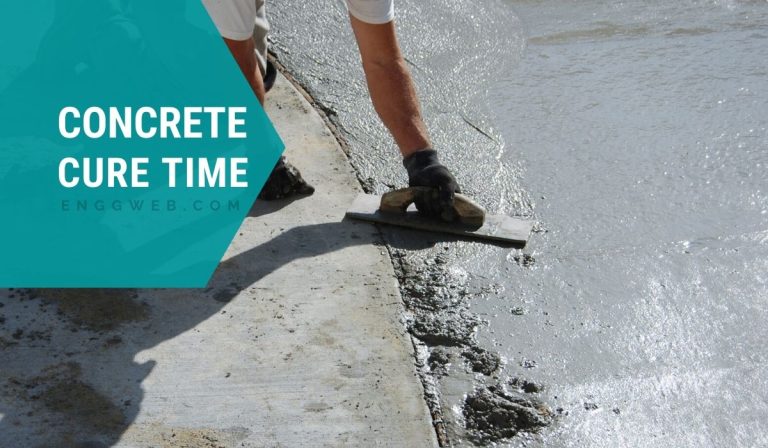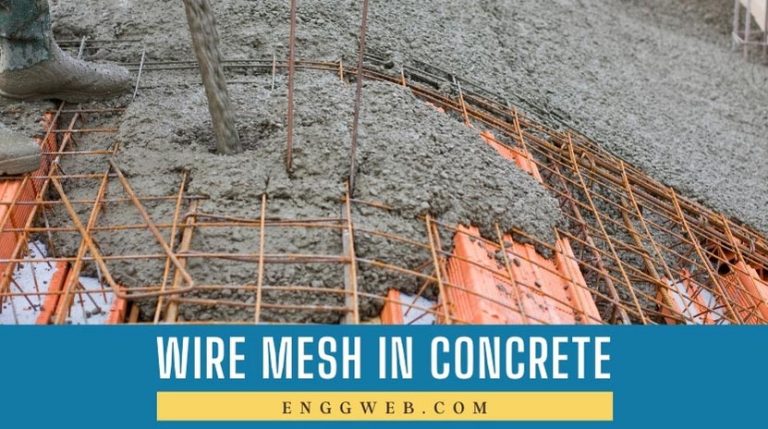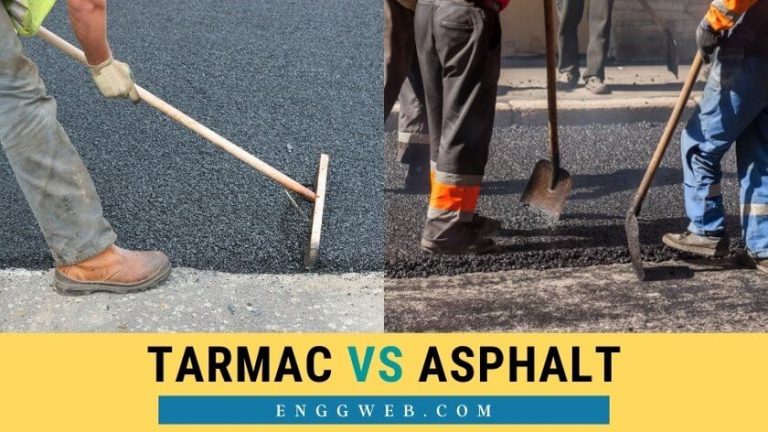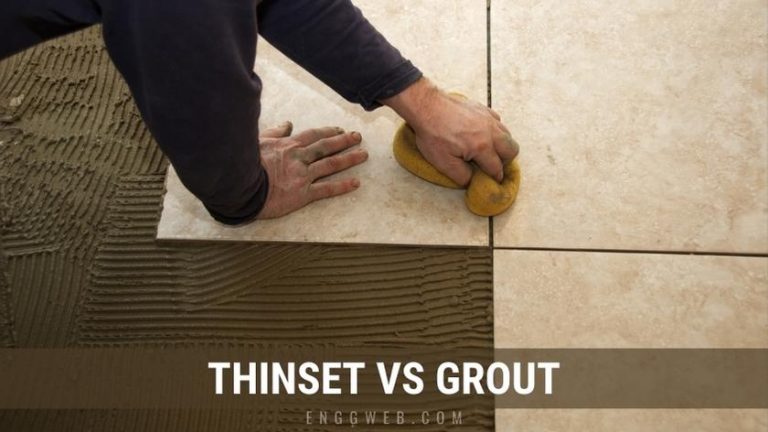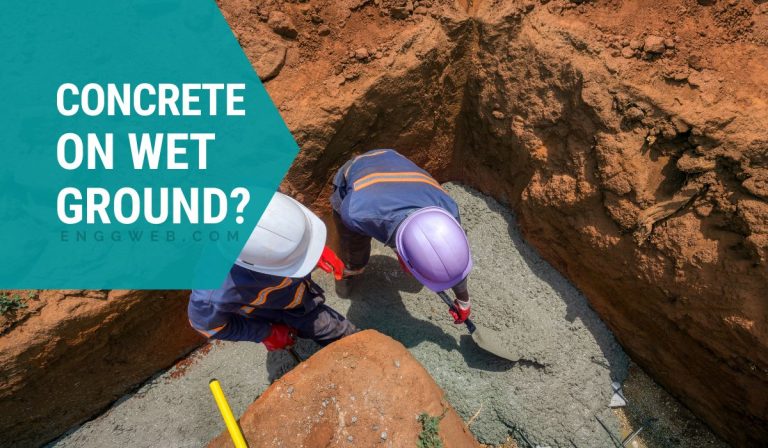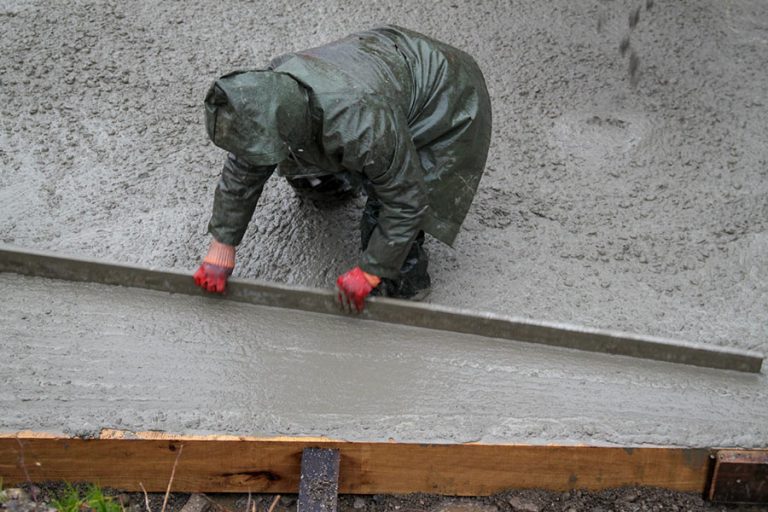Grout vs. Mortar vs. Concrete
Concrete, mortar, and grout are terms often used interchangeably, but they are not the same. While concrete is strong, mortar and grout are not. Let’s find out what else distinguishes these three from each other.

Contents
What is Concrete?
Concrete is one of the most widely used building materials, constituting a mixture of cement, water, and aggregates (sand and stone) in its simplest form. Concrete often contains fibers and chemical admixtures, enhancing its qualities and rendering it more suited to specific applications.
When concrete sets, a hydration reaction between the cement and water causes the mixture to harden and gain strength. The ratio between the cement and water determines the maximum potential strength gain – less water and more cement mean more significant strength gain.
Concrete is a highly versatile building material, suitable for use on its own or in combination with other materials, such as wire mesh, fiber mesh, and other forms of reinforcement. It could be low-strength, used as blinding in low-cost, temporary constructions. Alternatively, it could be high-strength and incredibly technical, used in constructing skyscrapers, bridges, and tunnels.
What is Cement?
Cement is a fine powder consisting of calcium, silicon, aluminum, and iron, along with some micro-additives. This substance is formed through a calcining and clinkering process, followed by milling and extenders, such as limestone, fly ash, and slag. Fly ash is a by-product of coal-burning (as in electricity production). Slag is a by-product of iron smelting.
This powder is never used on its own and requires water to hydrate and gain strength. You can see detailed comparison at concrete vs. cement article here.
What is Mortar?
Mortar is a mixture of water, cement, sand, and lime, commonly used as glue in brickwork. Here, bricks and blocks laid on top of each other, forming a wall, are held together by a layer of mortar in-between. Mortar is generally very fluid, allowing it to fill the crevasses, nooks, and crannies in brickwork.
Due to its high water content, mortar is never as strong as concrete and can never be used as a building product on its own.
What is Grout?
Grout is similar to mortar in that it acts like glue, holding ceramic tiling in place. Unlike mortar, it doesn’t contain a lime additive, necessitating the use of special lime-free cement. This is also a very fluid mixture, allowing it to fill the gaps between tiles and brick- or plasterwork.
While grout is a strong adhesive, it isn’t as strong as concrete and can’t be used as a stand-alone building product.
Concrete vs Mortar vs Grout Comparison Table
| Concrete | Mortar | Grout |
| Mixture of cement, sand, gravel, and water. | Mixture of cement, sand, water & lime | Made of cement, water, and sand. |
| Used for the construction of base, slabs, beams and pillars. | Works as an adhesive that holds bricks and stones. | Used as a filler between tiles and floor or wall. For plasterwork. |
| Very Strong. Can be used as standalone product for construction. | Weaker than concrete. Acts as a glue. | Low strength, but excellent adhesive and filler. |
The Role of Chemical Additives
Chemical additives, referred to as admixtures, enhance specific properties of concrete and other cementitious substances. These have many diverse applications and intended effects. The main types of admixtures used are water reducers, set accelerators, set retarders, and air entrainers.
Water Reducers
Most concrete and mortar mix designs incorporate water-reducing admixtures. These admixtures improve the fluidity of the cement paste (water and cement mixture), creating a more fluid concrete. Here, the mix design can be highly fluid without containing a high percentage of water. As a result, the ratio of cement to water in the mix design can be increased, enhancing the strength of the hardened concrete or mortar. This is advantageous when the concrete or mortar must be pumped long distances or flow into highly congested reinforcing or intricately shaped structures.
When working in hot weather or when the cementitious product should remain fluid for long periods, a set retarder is added to the mixture. This prolongs the period before the concrete or mortar starts to set, allowing more extended transport or site work times. Applications where this is useful, include large plastering jobs, where workmen receive a large batch of ready-mixed mortar. They require several hours to complete using this batch. However, concrete generally reaches its initial set between four and eight hours, which is insufficient in this case. With the judicious use of set retarders, they have enough time to complete the job without wasting a lot of mortar.
Set Retarders
Concrete sets faster in hot weather, which often considerably decreases the amount of time available to transport and place it before the initial set occurs. Here, set retarders also provide enough time to complete transport and placement before the initial set occurs.
Set Accelerators
Set accelerators are used in cold weather concreting and applications that work against a tight (less than eight hours) deadline. In cold weather, fresh concrete often takes too long to set, exposing it to the risk of freezing or insufficient curing. Set accelerators decrease the setting time, allowing the concrete to set before it freezes.
Another case where set accelerators are advantageous is in infrastructure repair projects. Closing a busy highway for repairs causes traffic jams and could harm the economy of busy areas. The concrete used in this application requires sufficient time to gain strength, though. Allowing traffic onto that portion of the road before sufficient strength gain would cause immense damage. Using set accelerators in this application allows rapid strength gain, shortening the time spent on repairs.
Air Entrainers
Air entraining admixtures are commonly used in mortar applications. Here, the admixture entrains between 2 and 6% air by volume in the fresh mortar mixture. Here, the air forms microbubbles that aren’t visible to the naked eye. The air bubbles act as ball bearings in the mixture, improving workability and enhancing the surface finish. This product should be used with care since entrained and entrapped air reduces the concrete and mortar’s compressive strength. This is generally fine in low-strength mortars but could have severe implications for structural concrete applications.

